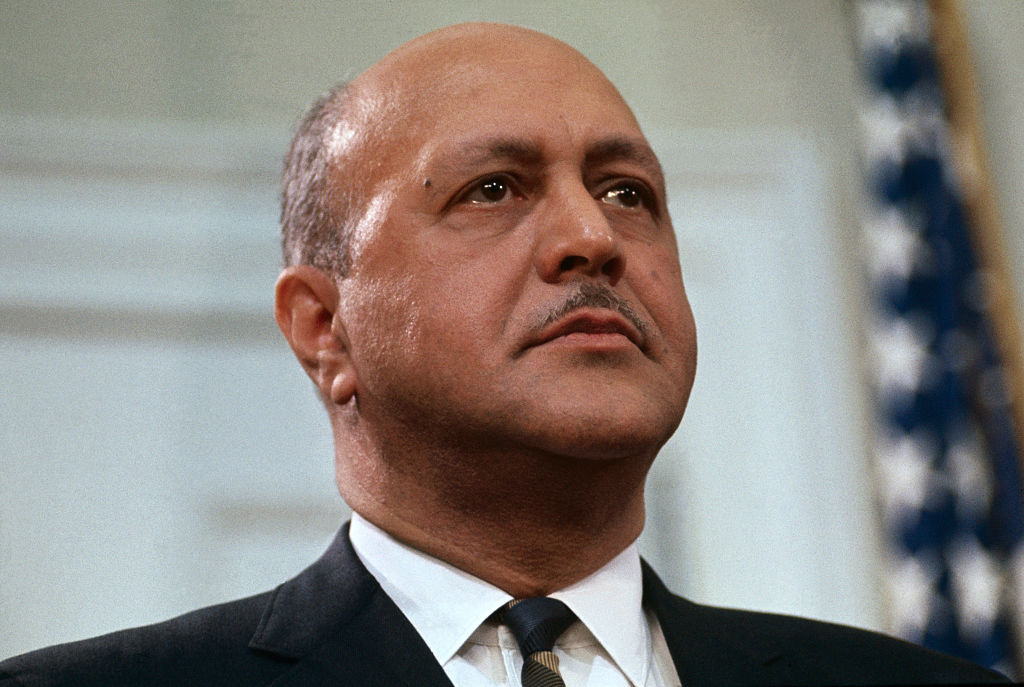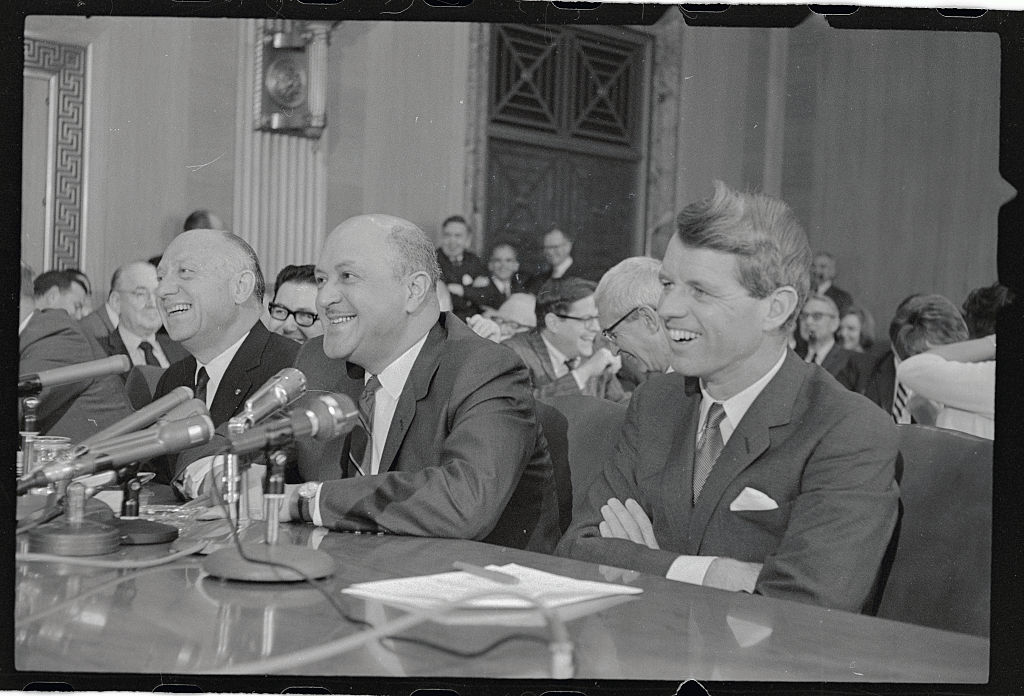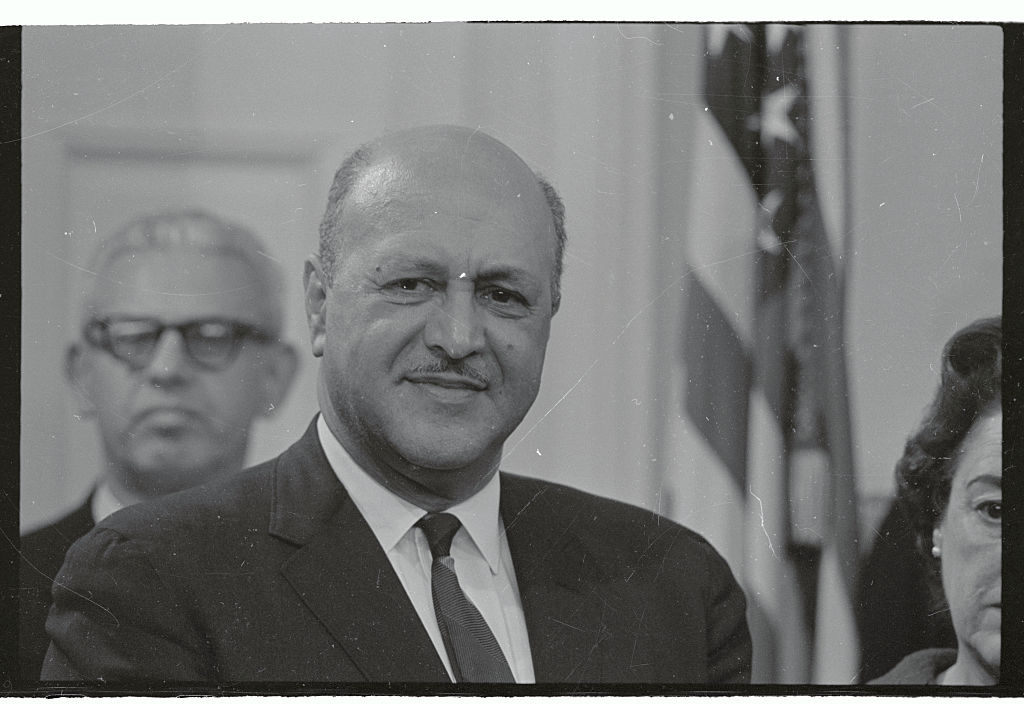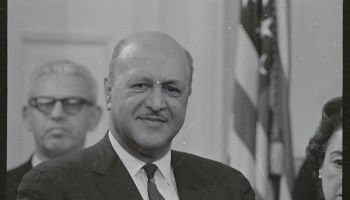
Robert C. Weaver at the White House, Jan. 13th, 1966, as President Lyndon B. Johnson announces that he has named Weaver as secretary of the new Department of Housing and Urban Development. | Source: Bettmann / Getty
Robert C. Weaver became the first Black member of a presidential cabinet 55 years ago. President Lyndon B. Johnson on Jan. 13, 1966, appointed Weaver to lead the then-newly created Department of Housing and Urban Development (HUD) in a role meant to represent the issues and concerns of approximately 130 million people living in metropolitan areas at the time.
Weaver had a strong civil rights background, previously serving as the chairman of the board for the NAACP. As the head of HUD was a proponent of the Fair Housing Act of 1968. Preceded by the Housing and Home Finance Agency, the creation of HUD marked a new focus on policymaking for those living in urban areas. A 1966 Time Magazine profile called “Hope for the Heart” characterized Weaver as a “connoisseur of urban living.”
Weaver’s appointment to Johnson’s cabinet was the second time he had been nominated for a cabinet position. President John F. Kennedy tried unsuccessfully to elevate Weaver to a member of his cabinet as the head of a new agency, the Department of Urban Affairs.

Robert C. Weaver appears before the Senate Banking Committee, which unanimously approved his nomination to be the first Black member of the cabinet one week after President Lyndon B. Johnson nominated him to be Secretary of the Department of Housing and Urban Development. He is pictured here flanked by New York’s two Senators Jacob Javits, Republican (L), and Robert Kennedy, Democrat (R). | Source: Bettmann / Getty
It was clear Weaver had the expertise and competency to lead a cabinet-level agency, but many in Congress did not support the creation of the agency or the appointment of a Black person to lead it. Before joining Kennedy’s administration, Weaver would give the future president advice on civil rights matters.
During the New Deal Era, Weaver advised various federal agencies on minority affairs. An economist, Weaver served as a member of FDR’s Black Cabinet, a group of Black professionals who served as that president’s advisors. Records mention Weaver advocated for Black participation in federal jobs programs in the 1930s, with earnings on par with their white counterparts.

Robert C. Weaver at the White House, Jan. 13th, 1966, as President Lyndon B. Johnson announces that he has named Weaver as secretary of the new Department of Housing and Urban Development. | Source: Bettmann / Getty
It would be more than a decade before another Black person would serve as a cabinet member. Patricia Roberts Harris was appointed as secretary of HUD in 1977. She was the first Black woman to head a federal agency. A few years after her initial appointment, Harris switched agencies becoming the secretary of the Department of Health, Education, and Welfare.
Recent nominations by President-elect Joe Biden will expand the number of Black leaders in a presidential cabinet. While his selection of Rep. Marcia Fudge for HUD secretary may be cliché to some, the nomination of Michael Regan as head of the Environmental Protection Agency (EPA) sends a strong message on environmental justice. If confirmed, Regan will be the first Black person to lead the EPA.
Anoa Changa is a movement journalist and retired attorney based in Atlanta, Georgia. Follow Anoa on Instagram and Twitter @thewaywithanoa.
SEE ALSO:
Confirmed: Atlanta Mayor Keisha Lance Bottoms ‘Respectfully Declined’ Biden Cabinet Spot, Aide Says
1,000 Black Women Pen Open Letter Addressing ‘Glaring Omission’ Among Biden’s Cabinet Choices
On This Day In History: Robert C. Weaver Becomes The First Black Person Appointed To A Presidential Cabinet was originally published on newsone.com
















